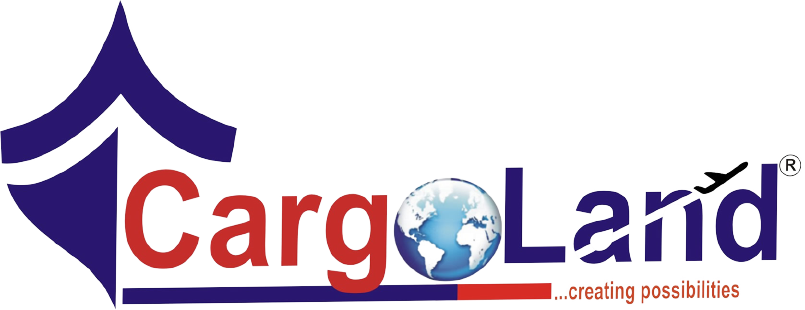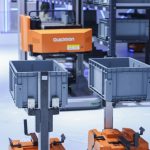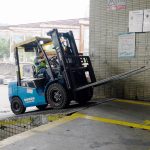Year Two of Bobcat’s ownership of the former Doosan forklift brand, and we’re starting to see some significant inputs to the striking orange and white machines, reports Peter MacLeod.
When Bobcat acquired Doosan’s forklift division, the industry watched with interest to see how the rugged, construction-focused brand would steer its new material handling arm. At LogiMAT this year, Bobcat made its intentions clear: to harness the legacy of Doosan while injecting Bobcat’s hallmark resilience, adaptability, and bold approach to innovation.
Jan Droogendijk, Product Manager for Material Handling at Bobcat EMEA, describes the company’s evolving strategy: “We are really focusing on small to medium-sized enterprises (SMEs) – those with one to ten trucks, perhaps a single shift. These are customers who want durability and performance, but not necessarily top-end specs they’ll never use. So, we’ve worked hard to build in the features they need, while staying cost-efficient.”
This pragmatic, value-oriented approach is embodied in Bobcat’s latest product lineup. At LogiMAT, the company showcased 10 new warehouse truck models, including pedestrian pallet trucks and stackers with platforms, plus a new three-wheel electric forklift designed for flexibility in tighter warehouse environments. The common thread among these machines? Fit-for-purpose functionality, built to last.
Durability as a Philosophy
Droogendijk is quick to emphasise that Bobcat’s material handling machines retain the core DNA of the Doosan forklifts: “Our trucks are heavier than many competitors’. That’s not just about weight, it’s about using more robust metal, which translates to better durability. These SMEs won’t replace a truck every couple of years. They want machines that last, and ours are built to do just that.”
Durability is treated as an essential characteristic for Bobcat’s target audience. “They don’t care if the truck goes 19 or 20 km/h,” Droogendijk says. “They just want it to work reliably, day in, day out.”
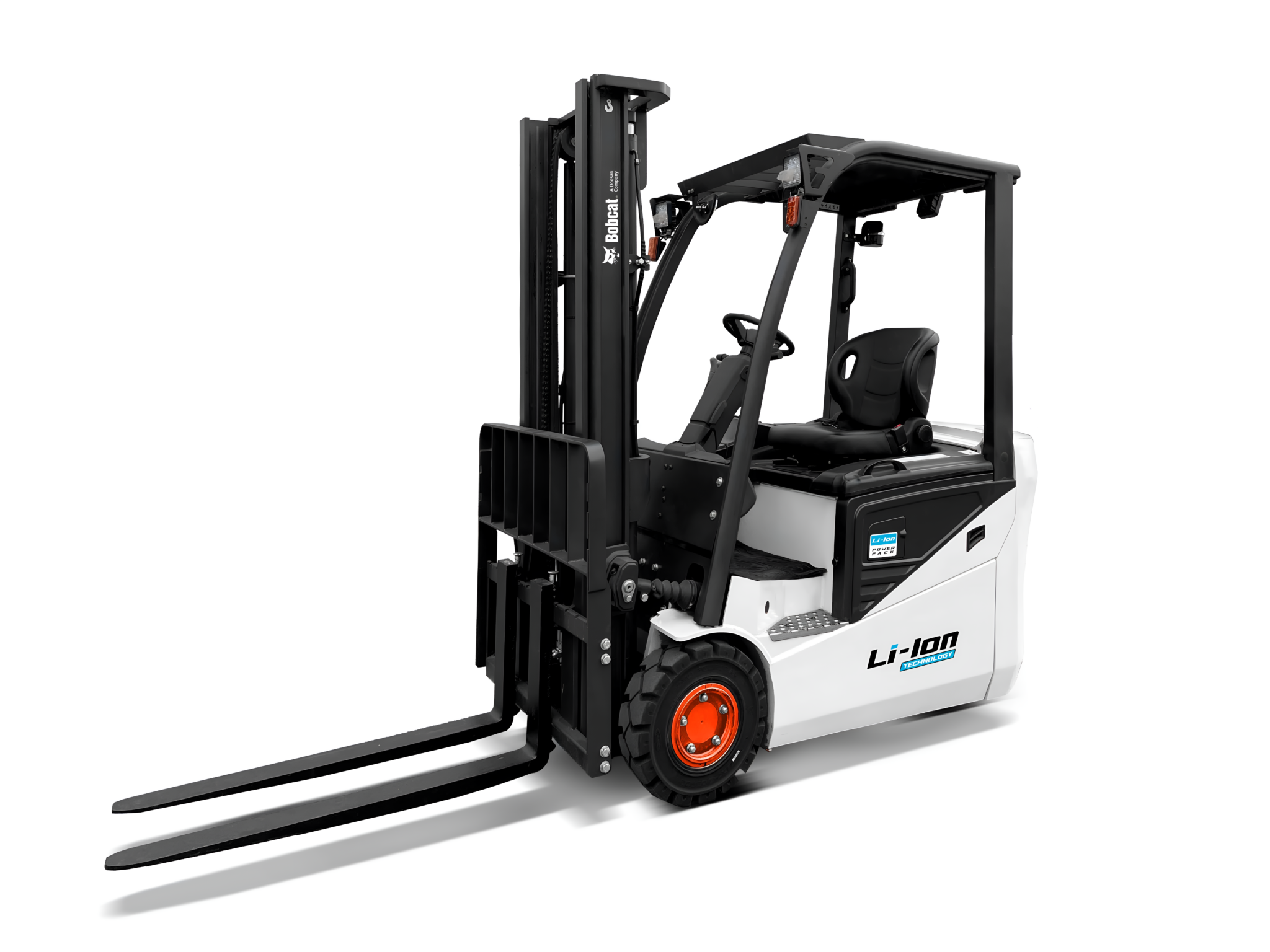
And for many of these customers, ownership still trumps leasing. While Bobcat does support financial programmes through its dealer network, outright purchase remains the most common path. “It’s a long-term investment,” he says. “After five years, they’ll ask: ‘Is it still working?’ If the answer is yes, then why change it?”
Rebranding
The transition from Doosan to Bobcat branding wasn’t merely cosmetic. As David Frodl, Senior Marketing Communication Manager at Bobcat EMEA, explains, “This was about more than a logo or a colour scheme. It was about creating synergy. Our parts and distribution centre for forklifts has moved to Halle, Germany, alongside our existing compact equipment infrastructure. That integration has allowed us to raise standards across the board.”
The transformation also brought introspection and mutual learning. “Bobcat learned from Doosan’s reliability heritage, and Doosan’s operations absorbed Bobcat’s energy and branding strength,” Frodl says. “It’s why we talk about ‘reliability redefined’. We’re building on what was great, and pushing it further.”
Electrification Push
Electrification is a major focus for Bobcat’s forklift strategy, albeit not an exclusive one. While lithium-ion battery systems are being rolled out under Bobcat’s own branding, with production expected to ramp up later this year, the company remains pragmatic about internal combustion (IC) engines. “You still need diesel,” Droogendijk affirms, gesturing toward the company’s seven-tonne diesel truck on display. “Especially in higher capacities and heavier-duty applications. We’re seeing electrification in these segments too, and we’re investing in it, but Stage V diesel is still efficient and clean.”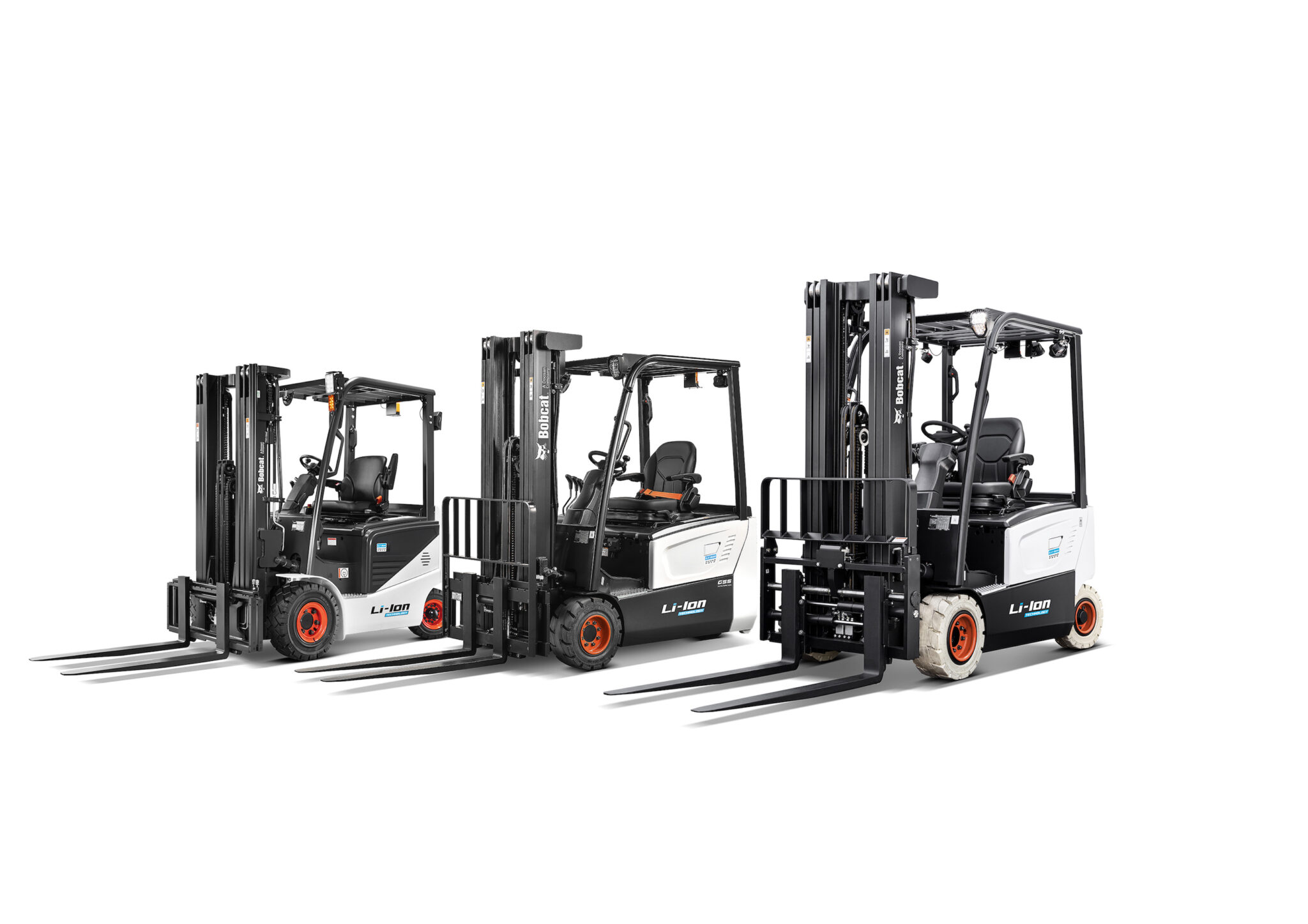
Frodl adds that infrastructure challenges often slow electric adoption. “In some countries, upgrading electrical capacity at a facility can take two years. You can be ready to invest, but the grid isn’t.”
Whether electric, diesel, or LPG, Bobcat’s product philosophy centres around delivering value where it counts. “Most of our SME customers operate trucks between one and three tonnes,” Droogendijk explains. “That’s the heartland of the forklift market and we’re very strong in that space.”
The new lithium-ion battery, developed through a joint venture but owned by Bobcat, is designed to be compatible with all the company’s electric forklift lines from launch. Benefits include faster charging, lower maintenance, and better uptime, though the cost-benefit ratio will vary based on application.
For now, the diesel and LPG options remain important for customers in less electrification-friendly regions or heavier-use industries. “We want to give customers the right product for today,” Droogendijk says. “And right now, diesel still makes sense in many situations.”
Expanding in Europe
The rebrand has also helped sharpen Bobcat’s dealer strategy across Europe. “We kept the majority of Doosan’s network,” Droogendijk explains. “But we also assessed where to improve, sometimes combining strong construction and material handling dealers in the same territory. As a result, we’ve increased our service points, improved aftermarket logistics, and strengthened support overall.”
As the Bobcat brand becomes more recognisable in the material handling world, the company is doubling down on visibility, marketing and product launches to maintain momentum. Its growth plans remain laser-focused on the SME sector, where the blend of rugged performance, thoughtful design, and strong after-sales support resonates deeply.
“We’re not trying to sell Porsches to people who need reliable delivery vans,” Droogendijk says. “We’re giving businesses the right tool for the job, one that lasts, doesn’t cost the earth, and is backed by a brand they can trust.” With an ever-expanding electric range, homegrown battery technology, and an integrated European network, Bobcat’s forklift business looks well-positioned to continue its growth path.
similar news
The post Forklift Reliability Redefined appeared first on Logistics Business.
